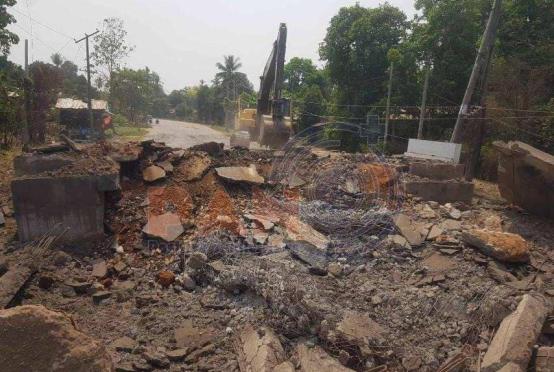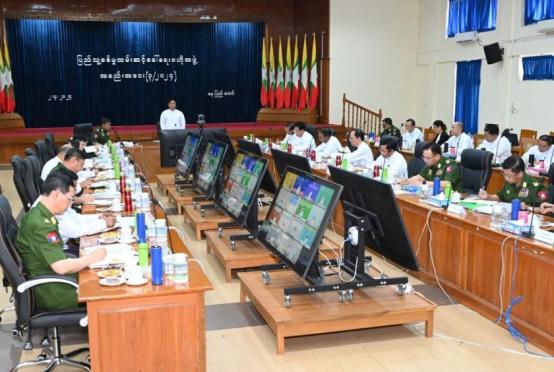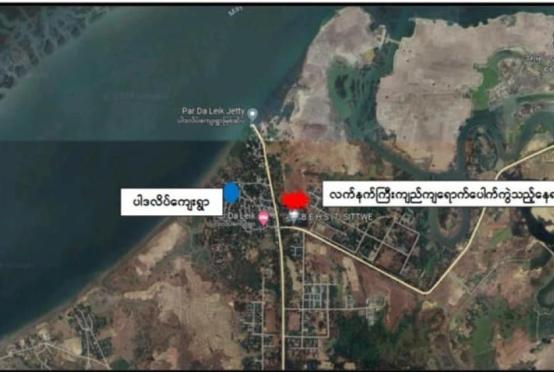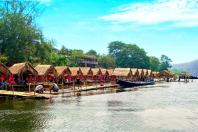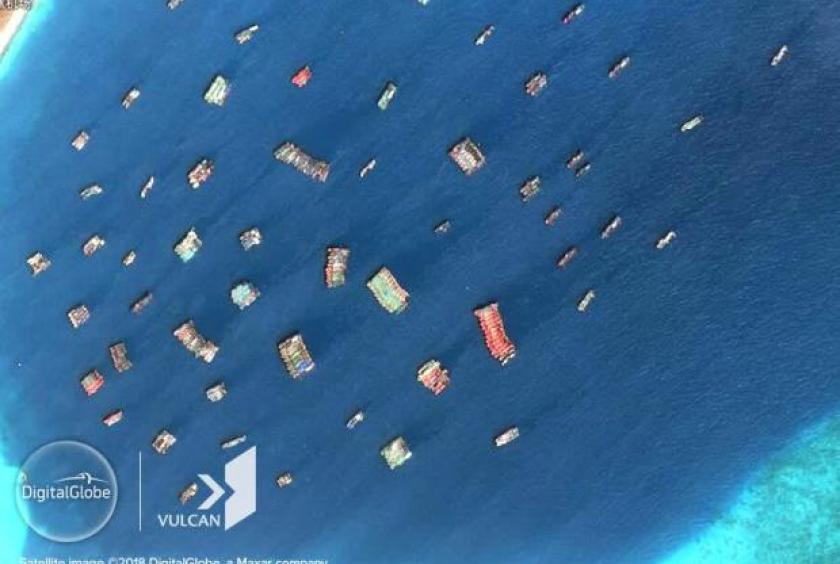
MANILA (Philippine Daily Inquirer) — The presence of Chinese maritime militia near Pag-asa Island (Thitu Island) in the West Philippine Sea (South China Sea) threatens the Philippines’ aerial and sea routes to the island, an analyst said.
Maritime expert Dr. Jay Batongbacal said that if China would maintain its constant presence near the island, the Philippine control of Pag-asa and the sandbars close to it would be completely lost eventually.
Dozens of Chinese vessels have been maintaining their presence on a daily basis around the Philippine-occupied island in the last three months. The military tallied over 600 vessels to have come and gone for the first quarter of 2019 alone.
“Combined with massive PLA-N [People’s Liberation Army – Navy] and CCG [Chinese Coast Guard] ships, plus hundreds of PAFMM [People’s Armed Force Maritime Militia] forces, China won’t even have to touch Pag-asa, they can just cut it off when they want to,” Batongbacal said in a Facebook post.
In a recent security briefing, Lt. Col. Elpidio Factor of the Western Command said most of the Chinese vessels, identified as maritime militia, were mostly in the vicinity of Pag-asa’s sandbars.
There are three sandbars between Pag-asa and China-controlled Zamora Reef (Subi Reef), one of China’s biggest military outposts in the Spratly Islands.
The closest sandbar to Pag-asa, Sandbar No. 3, is located 2 nautical miles (3.7 km) away, while the farthest one, Sandbar No. 1, is 4.7 nautical miles (8.7 km) away from the island.
“The fishing vessels establish an informal, non-military blockade of Sandy Cay, cutting it off from access from Pag-asa,” Batongbacal said. “If this situation continues, Philippine control of the area of Pag-asa will effectively be lost and reduced to a mere 4 nautical miles, and that piece of territory (Sandy Cay is a high tide elevation) will likewise be lost.”
Pag-asa Island Mayor Roberto del Mundo said last month that China had been denying local fishermen access to the sandbars, a traditional fishing spot. As early as 2017, there had been reports of Chinese Coast Guard and its fishing vessels blocking Filipino fishermen trying to go to the sandbars. The government played down these reports.
The Philippines’ air access to Pag-asa is also at potential risk because of the presence of these Chinese vessels.
“Those fishing vessels are also directly along the flight path of any aircraft coming into/out of Pag-asa using the runway; anyone coming into/out of Pag-asa by air could be under threat from these fishing vessels considering today’s portable weaponry,” Batongbacal explained.
The nature of these Chinese vessels is quite tricky. Most of them pose as fishing vessels, but they are not actually fishing. Instead, they have been intimidating other vessels by just maintaining their presence in the area.
This tactic is referred to by experts as “gray zone strategy,” where the vessels are used to “to avoid direct responsibility by arguing that these are not government vessels.”
Sandy Cay’s importance
The Philippines has lodged a diplomatic protest against the “illegal” presence of the vessels around the island.
“Such actions are a clear violation of Philippine sovereignty, sovereign rights and jurisdiction,” the Department of Foreign Affairs said.
President Rodrigo Duterte has also asked China to “lay off” Pag-asa. Otherwise, he would send Philippine troops on a “suicide mission” in response. But he was quick to clarify that it was a “word of advice” and not a warning to Beijing.
The move is surprising, as the Duterte administration has earned criticisms for its nonconfrontational stance in the sea dispute in exchange for economic opportunities and friendly ties with China.
In 2017, Duterte said he would not go to war over the sandbars when urged by critics to protest the presence of the Chinese vessels near the island.
“PRRD [President Rodrigo Roa Duterte] thinks it’s not worth fighting over this sandbar. He does not see that if he cedes control of that pile of sand, he will cede aerial access to Pag-asa, directly undermining the Philippines’ ability to keep its hold on its largest island in the Kalayaan Island Group and the seat of government of the Municipality of Kalayaan,” Batongbacal said.

